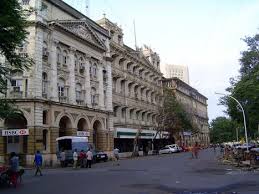MUMBAI: Churchgate residents are worried about the impact construction work of the Metro-III will have on their iconic, art decor buildings, some of them dating back to the 1930s.
Residents of Thakur Niwas on Jamshedji Tata Road had written to the Mumbai Metropolitan Region Development Authority (MMRDA) about their concerns on March 11. The letter quoted Jamshedji Tata in a letter to his son Dorab, saying, “Be sure to lay wide streets planted with shady trees, every other of a quick growing variety. Be sure that there is plenty of space for lawns and gardens. Reserve large areas for football, hockey and parks. Earmark areas for Hindu temples, Mohammedan mosques and Christian churches.”
Shefali Kapadia, a resident, said, “Our building was built in 1953. J Tata Road is reclaimed land and ground water seepage is high in the area. Our building reverberates every time a BEST bus passes. An underground Metro could impact our building as it is over 60 years old. We wish to understand the safety and long-term impact of the Metro.”
The residents clarified that they were pro-development. Neera Punj from Lotus Court, built in the 1950s, said, “Ours is a six-storeyed building. We are concerned about the long-term hardships we may face. We are pro-development but not at the cost of damaging our peace of mind with the noise and air pollution the construction will cause. We have worked hard to maintain quality life in our area with street vendors being allowed in a particular area and footpaths being kept for pedestrians. We are not rabble-rousers. What if the work causes cracks in our buildings?”
The residents are also worried about the large green cover they may lose. “They are planning to destroy a boulevard of old trees for the Metro-III. The authorities say they will knock down our compound wall for better access. Their track record has not been very good, hence we are worried,” said Leetu Shivdasani, who has been at Lotus Court for nearly two decades.
Mumbai Metro Rail Corporation Ltd officials said buildings will be monitored daily or more frequently during and after construction through vibration-monitoring machines. MMRCL said special attention will be paid to heritage/historic and sensitive structures.








